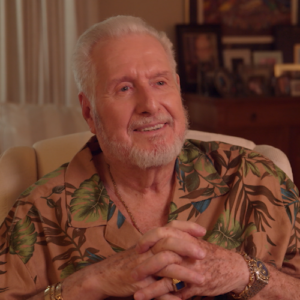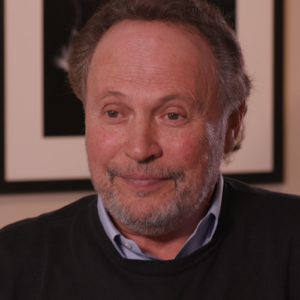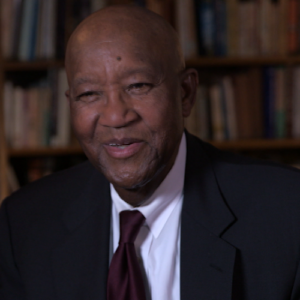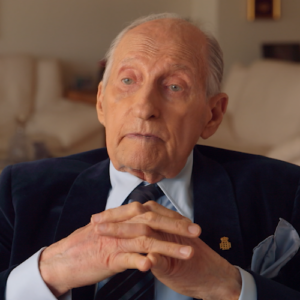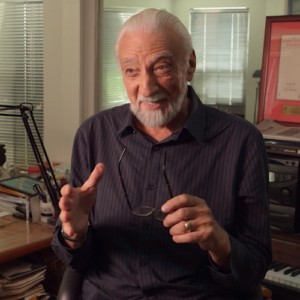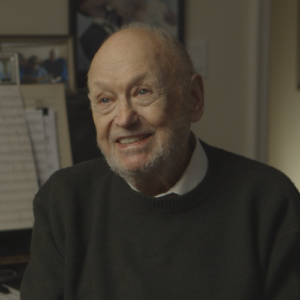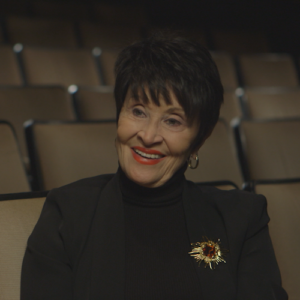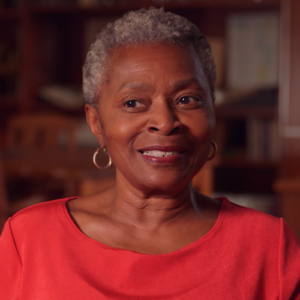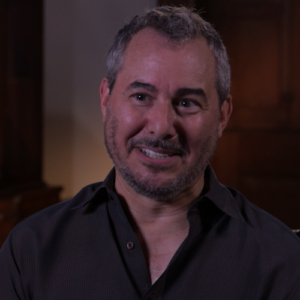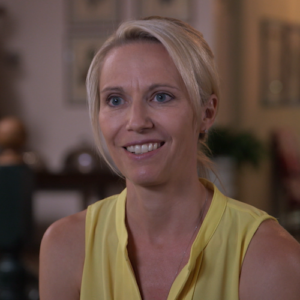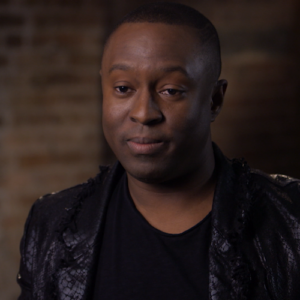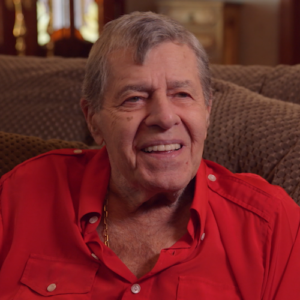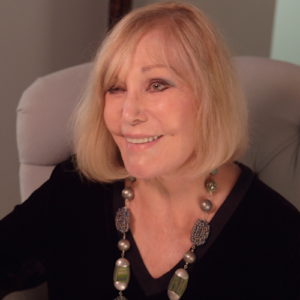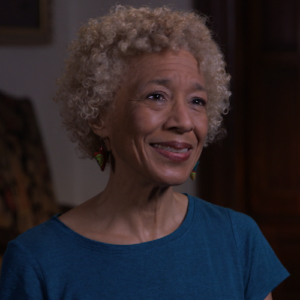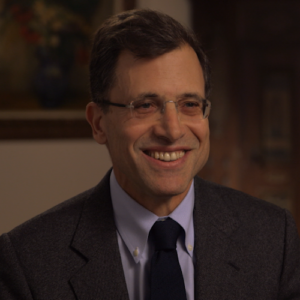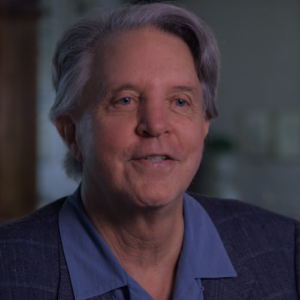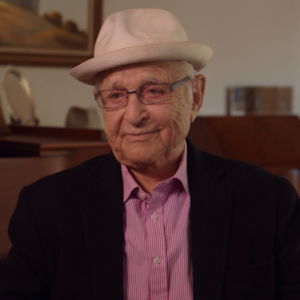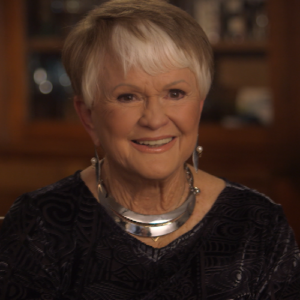Interviewer: Michael, thanks for doing the interview.
Michael Dinwiddie: Doing the interview. Thanks for the invitation.
Interviewer: Please tell us your name, Richard.
Michael Dinwiddie: My name is Michael Dinwiddie. I’m a professor at the Gallatin School, New York University. I’m a playwright and a musician. I play piano, too.
Interviewer: When did you first become aware of Sammy Davis Jr?
Michael Dinwiddie: Well, Ebony magazine. Oh, I became aware of Sammy Davis Jr. When I was a kid. Ebony magazine. It was kind of like the Bible in African-American homes, striving, upward mobility, all that stuff. And so they were always writing about him. He was on a couple of covers, some cover in 66, 76, but I was like nine or ten years old. And I remember the article talked about his conversion to Judaism, and one time they talked about his wife, May Britt, who was not African-American. They showed pictures of his fabulous home in Hollywood. And so that’s how I became aware of it. That was my first notion of who he was, this kind of glamorous guy who had this fantasy life.
Interviewer: What was in your view, you remember the reaction of your family of black people to the stand and the success over the days? How do they perceive seeing it when you were growing up?
Michael Dinwiddie: Well, you know, it’s a hard question. And the reason it’s hard is because there’s like the filter of now. But at the time, he you know, he was pretty much beloved. I mean, people really thought he was incredible. He was an amazing artist. He was he was very respected. I mean, he worked with everybody. He did all kinds of TV shows to had all kinds of special stuff like that. So he was very much kind of a great song and dance, man. He he he didn’t feel like this old guy doing stuff. And, you know, music has changed so much now. But in that time, you listen to the music that your parents listening to, too. And Broadway was a whole different experience to, you know, his year on Mr. Wonderful. You know, so there was a kind of real respect for him who him, his survival in the business and what he had achieved.
Interviewer: You know, he came out to, you know, it’s history. You can live with. It will last. Yeah. Sammy Davis senior came out it not guilty of this you know and you can still see inklings of that and he was doing the job, you know. You can me Mark. Oh, my favorite thing. Do you think that that became passé for Sammy, that he kept doing that by the seventies? Was that still in step or not?
Michael Dinwiddie: You know, that’s a the idea of that Pigmeat Markham stuff and here come the judge and all this. I hadn’t even thought about til you brought it up again. But I mean, I think of Laugh-In and those shows. It was a corny time in America. People were doing things. African-Americans took it a little differently because it felt like it really reflected a different era and a different way in which black people had to act when they were on stage. So Sammy kind of always was on this really weird line between respectability and kind of like foppish, stupid behavior, satirical stuff. That was fun and funny, but it had a whole racial tinge that other artists didn’t have to deal with.
Interviewer: You know, the whole the blacks are going to tell us with the chitlin circuit with it, Sammy. That’s. That’s how you to find the chicken.
Michael Dinwiddie: Well, okay. The Chitlin circuit was the name that was given to the clubs and venues that African-American entertainers could perform in, in the teens, the twenties, the thirties and forties, places that were safe for them to perform. Now, it was called Chitlin Circuit, first of all, cause sometimes they serve chitlins, that’s one. But the other reason was because the pay was so low that, you know, it was like it was chitlins afterwards. So these were like clubs that were kind of off the main streets that were usually in the center, the African-American neighborhoods. And the pay was very low because the clientele didn’t have a lot of money. But they were known for their active audiences. People would let you know if they didn’t like your performing. I mean, the pinnacle of it was the Apollo Theater. That was the pinnacle. But there were other theaters and I mean, the Regal in Chicago, the Howard in Washington, D.C. And these were like the places that you went that were great. But the chitlin circuit was the little clubs in Houston, the peacock, places like that. There were also part of this circuit. And so black entertainers would do this whole circuit across the country to arrive at these major places. So it was a hard life. You had to be really on your toes all the time. You could end up in a town and not get paid, not be able to get out of town. You could also incur hostility because you were strange African-Americans in a place whites at that time, if they didn’t know who you were many times, that would open you to violence. There are lots of stories of entertainers being attacked who were considered to be uppity because they were dressed up and they spoke with a different dialect and things like that. So it was a different world. It was a rough and tumble world. And, you know, Sammy started when he was three years old. You know, some accounts he talks about being two years old, but three years old. So he has this long career that takes him from not only the chitlin circuit, but to Broadway, to film, to television, all these things. So he encompassed all of what it was to be an entertainer in America.
Interviewer: And what was well within the circuit been like that? Very.
Michael Dinwiddie: The chitlin circuit was a hard way to make a living. It was a very difficult way to make a living, because, as I said, from city to city, from town to town, you didn’t really know what you’re going to encounter. You know, will there be an audience there? Will I get paid afterwards? There were no guarantees. There is also an organization called Toba Toba, which stood for tough on black asses. Well, that’s not what it really were, but that’s what the entertainers felt it stood for. And it was a it was, in some ways a more legitimate line, a higher line of work than the Chitlin circuit, which was like clubs and small venues that people could performance. I mean, you know, I think at the Chitlin circuit, I also think that there were the circus acts, the tent shows, you know, the great blues singers came out of those tent shows, you know, the shouters, you know, the Mamie Smith’s and all those ladies square and all those. But it was the best training in the world for being on stage. You had to keep your audience. You had to really understand how to perform because they you know, these people who worked all day had a hard day, hard time to come and spend their nickel or dime for the beer or the food or the chitlins. And they’re not going to sit there through something. They don’t feel like entertainers giving his all. And I think that’s what Sammy got out of that that era or that time. And so will Master, too.
Interviewer: I’ve been watching some of those over the last century. Mm hmm. You can see that what they’re doing is that sort of style, which is if somebody comes out this little park, the other guys see this person? Mm hmm. Did that change that style? That will last and show had go change as they started to get more successful.
Michael Dinwiddie: Well, I will I will answer this by deferring to Laurence Maslin, because what you just described sounds a lot like a kind of a minstrel show. This idea of tell.
Interviewer: Me whether I was.
Michael Dinwiddie: Okay. You just described this notion of people coming on performing. One group performs another group performs a clap for each other and all that. And that really sounds like the structure of what a minstrel show was like, that there were performers who got up and did different things. It’s like special bee acts, singers, dancers, eccentric dancers, meaning they did things that no one else could do. And so that was the world. This harmony came up in a world where you you did whatever you had to do to get the audience and keep the audience. And he slowly became really the star of the group. I shouldn’t say slow. He he from the beginning, he was such a talented, amazing artist in terms of he knew how to play an audience. He knew how to really go at them and really get them excited.
Interviewer: When I’m watching some of that stuff. I mean, Sam, seen in the last thing. They weren’t doing much, you know, they just clapping.
Michael Dinwiddie: Well, they you know, I think it was in some ways Sammy Sammy was the star from the beginning when he came into the act. I mean, as a little kid, you know, I mean, he you know, his first movie, The 1930s with Ethel Waters, Rufus was something. Yeah. Rufus Jones is going to remind you that, you know, his first movie, 1930s with Ethel Waters, Rufus Jones. I mean, he’s a little pint sized guy, already comfortable in front of the cameras. So that tells you he’d really been trained. The other guys, I mean, you know, they were making a living. But Sammy, it was a life. That’s an answer. I’m a pianist. I’m okay.
Interviewer: This is safer jazz. Like these performers like these after World War Two. Vaudeville.
Michael Dinwiddie: Well, well, first of all, change started changing much sooner. The change started happening Really? With the change in the culture from vaudeville, we started to get talking movies. We get radio, we get other ways that people can be entertained. They don’t have to go anymore to an actual place to see and see the entertainers. And then there’s a shift in the culture. We have a World War one in which African-Americans begin to 70,000 African-Americans serve in World War One. And when they come home, they have a whole different attitude about what it is to be African-American in a society. They’re really what they start to call the new Negro. I mean, that term is earlier than that. But that’s when it really comes into focus. And the idea is we’re going to demand our rights. We’re going to go over where we need to go. And and so you see this change and even the way the entertainers present themselves. So remember, we’ve we’ve come out of a time where it’s totally acceptable to wear blackface. It’s totally acceptable for entertainers, black and white entertainers, to put on blackface as minstrelsy. This kind of residual thing that you even see brought over to the Hollywood movies up until, you know, the forties and fifties, you see that it’s really still happening. And so there’s this culture change of how African-Americans want to depict themselves and be depicted and. It affected everything in terms of entertainment. I mean, I started to think about when I start to think about the 1920s, I started to think about, you know, the Harlem Renaissance. And I started thinking about people like Duke Ellington and Cab Calloway. I think about Ethel Waters blooming into a whole different kind of a star from being a blues shouter, stirring, being more mainstream, mean and kind of, you know, intent shows, being on Broadway and introducing songs that become Grammy classics. So there’s a very different notion of entertainment that’s happening in the culture, and there’s a very different notion of what it means to be an African-American entertainer.
Interviewer: And I was involved after World War Two.
Speaker 3 I don’t know.
Michael Dinwiddie: I don’t know what you want me to say, baby. I don’t know. What does it involve? The military policy? Let me think for a second. Oh, well, the gangsters come in, you know. Well, okay. All right, all right. I can. I can I can. I can kind of feel this. I’m after Roe after World War Two. You see a kind of. I don’t I can’t think of the word. It’s like systemize control of the business, the different businesses. So you see, m’kay, with all the jukeboxes now, we’ve had this earlier from the 1920s with the gangster involvement and entertainment, but it becomes a much bigger business in terms of the culture. You also see Hollywood really growing and really becoming a major part of the culture. World War Two really helps. That happened in terms of films in the film industry, things like that. So for entertainment, I’d say that there were many more opportunities for African-Americans, but it was always still a struggle to get the kinds of roles that did not depict them in demeaning ways. And so that part of the struggle, what Sammy was always having to deal with was but I have to say, most of the.
Speaker 3 Time.
Michael Dinwiddie: It didn’t seem that it bothered him. Whatever. He would just do whatever it was to do. That was kind of his personality, which was different than some of the other stars of that time.
Interviewer: What was his personality so difficult.
Speaker 3 To justify to people?
Michael Dinwiddie: It’s what happened at the World War Two.
Speaker 3 Well, I want you know, I’m wondering whether the, you know, the chitlin circuit sort of homers out.
Michael Dinwiddie: Okay. So you asked me the wrong question. I got this. I know what you want in nightclubs. Not in.
Speaker 3 Vegas.
Michael Dinwiddie: I got it for you. I know what to say. Now, after World War two, something amazing starts to happen in our country. And it’s actually during World War Two. It’s called urban renewal. And what happens with urban renewal is that African-American neighborhoods become the centers of the expressways. And that’s and those neighborhoods were the centers of the entertainment industry. So this is real incredible impact of killing off these small clubs, these small places. And you can see it in any city if you want to, where the black business section was. Find out where the expressway is. Pittsburgh, Detroit, Philadelphia, D.C. And so that had the effect. In some ways, it had the effect of opening African-American artists to having to go to other venues, to other areas. I mean, it’s happened in Detroit with Berry Gordy Farnsworth, and it’s in Antoine. Where Motown started is no longer that he had to move out and he had to start to think about a bigger audience, a larger audience. So I would say that what really happened was this kind of political impact on the culture in a way that people don’t really think about it. But in fact, that’s that was a major, major change in African-American culture. Then the other thing is that a lot of these clubs and places were run by and owned by men who had made their money in the numbers racket. Now we call called the Lottery today. But when African-Americans and Latinos were doing it, it was illegal. But if you can imagine the fortunes that are being made today, those same fortunes will be made in the thirties and forties and fifties. But then you get the crack down the culture on these men who who actually legitimized their businesses, who actually ended up being the banks for African-American communities. So they were run out of business basically, which meant that there was no more economy for this kind of entertainment the Gotham Hotel, the Paradise Valley and Detroit, these places. So that’s a that’s one of the ways to really think about the big change that happened.
Interviewer: But then there was this other change, too. Either you had the advent of television.
Michael Dinwiddie: Oh, yeah, Yeah. The advent of television. That made for a big change in the 1940s as well. But a lot of people didn’t on television. So of course that was the era too, when if somebody African-American came on TV, people, they.
Speaker 3 Go.
Michael Dinwiddie: On television, you know, that kind of thing. Yeah, television, film, radio, media. And in a in a way that really impacted the culture. Right.
Interviewer: To say he was born in Harlem in 1925. From your study of history, was Harlem like perhaps the.
Michael Dinwiddie: When Sammy was born in Harlem in 1925, it was a community that was. Still growing, burgeoning, an incredible outpouring of cultural life, political ideas, people buying their homes. People proud of having this community. I mean, you know, it kind of happened by accident. These subways built these trains to a place that nobody was moving. This guy named Philip Payton was African-American who had a real estate company. And he went to the owners of the building, said, I can get you black tenants, You can charge more, and they’ll be more, more steady. And so it was a block by block thing that happened. And in Harlem really turn around when the black churches started buying play, St Philip’s Protestant, Episcopal and Abyssinian bought massive places because they were leaving Midtown. They believe they were being bought out of the places where Penn Station was other places. So Harlem became this really amazing community of people of color. And what made it really different, they were from all over the world. So they were Haitians or Africans or people from the South, the U.S. They were northern African-Americans who had been in New York since the 1600s as well. So it’s a real blend of people coming together who felt, oh, we have a community that we can be proud of. We have a community that we can build. And so you had Marcus Garvey, the United Negro Improvement Association. You had the NAACP moving to Harlem. You had really active Hubert Harrison activists and Philip Randolph, these guys who were politically active and credible, they wanted to change the economy. They want to change the society. They were the new Negroes. Alan Locke publishes the New Negro in 1925, which is an anthology of the works of Langston Hughes and other people. You have Jean Toomer, who is a great, great novelist who writes this little book called Cane, which is considered one of the best of its time. And he sees and you also have this real exchange between uptown of downtown Bohemia, Harlem. This is going back and forth. And then, of course, there’s the music. Now, what’s interesting about the Harlem Renaissance period is that the blues and the music of that time wasn’t thought of as part of this cultural movement forward, because one of the ideas was, Let’s be respectable, let’s have a kind of culture that is high culture. And, you know, then you get down to business. Ms.. Clara And.
Speaker 3 Honestly.
Michael Dinwiddie: Know the blues shouters. And that wasn’t considered the kind of performance that would, you know, be okay. But it was it was all happening. And you had the clubs in Harlem, you had the African-American clubs, you had the white clubs, the Whites only Cotton Club, the most famous one of all. Was interesting that, you know, Jack Johnson started this place and only mad and from prison takes it over so you can sell beer number one and but it becomes the play. But what becomes fascinating about it is that they are doing Broadway style revues. They’re doing shows that are so good they can actually go right downtown Broadway. So the Cotton Club girls become famous. You have great music. Fletcher Henderson is there. Sorry, I was going to say that.
Speaker 3 You.
Michael Dinwiddie: To have great music there. Have Fletcher Henderson is followed in by Duke Ellington Orchestra in 1927 and then Cab Calloway. I mean, these guys are amazing showmen and they’re bringing a whole and then, of course, radio in the Cotton Club, you know, which then broadcasts all across the country. So jazz becomes this is the jazz age, as Fitzgerald calls it. And so that’s what’s happening in Harlem at the time. Of course, at the same time, you have incredible overcrowding because the City Fathers, there’s a great book called Blacks in the City by Sharpe Sharp. HARRIS And he talks about the fact that when the African-Americans and Africans came to Harlem, they really thought that after there were no jobs, they would all leave and go back to where they came from. So they didn’t build any more schools. They didn’t do anything with the systems there. They didn’t building more housing, anything like that in Harlem. And so it becomes this overcrowded, really densely populated community. And very soon it is too crowded for the people, for the for the for the area.
Interviewer: Who have been some of the performance performances that Sammy was coming up with. The end goal is to have more influence the trio during that time.
Michael Dinwiddie: Well. Sammy was influenced by incredible performers who had been in the chitlin circuit, in vaudeville, been on Broadway and had international careers. He would have known about them. And she died when he was a child of Florence Mills, who was an incredible performer at that time. Ethel Waters was a performer at that time. She was String Bean and she was nicknamed. She was considered a really talented artist. She was on Broadway. She appeared in the clubs. I mean, one of the great stories is that, you know, someone came to and said, Do you want to go to Paris? And she said, No, I don’t. You know, I can’t for that money. So they took this girl named Josephine Baker instead. So that gives you an idea of the kinds of people. Lionel Hampton was someone who had a big impact on Sammy Davis Jr. In fact, Lionel Hampton says that he taught me how to play the drums and the vibraphone. So Gladys Hampton, who was his wife and manager, would sometimes insisted the Will Mastin Trio perform with them whenever they went somewhere because Lionel was going all over the place and performing. So it’s really interesting. So those kinds of performers, Bill Bojangles Robinson, who had a big impact on him, I mean, obviously, but the thing about Sammy is he was looking at all those dancers he was doing. He was looking snake hips. He was looking at Bill Bojangles, he was looking at bubbles. He was looking at I mean, I was going to say Benny Briggs, that might be a little later. But he was he was he was like an autodidact. He took it all in. He took it in intellectually, and then he took it in in his body and his physical being. So that I would say those are the ones I would think of who really and Powell and of course. Al Jolson. Eddie Cantor. You know, Sammy, one of the things about the entertainment world is the way in which this society was structured was not how entertainers thought about each other. People really worked with each other. They admired and respected each other. They they socialized. I mean, this is this is also the period of Sicilian Blake and Miller and, you know, Lyles and Miller shuffle along 1921 on, you know, downtown big Broadway hit. I mean, you know, we got it again, you know, with George C Wolfe’s revisiting of it. So these are the people walking around. This is what this is the world he’s in. And so it’s a time where you assume that this is always going to be all these really talented artists are going to be part of your world. And that’s what I think that that’s you know, that’s part of Sammy’s crazy drive was I’ve got to stay as good as these guys are going to be as good as they are all the time. I can’t. I can’t relax. I can’t calm down.
Interviewer: So this was speaking of Bill Bojangles Robinson. Let’s talk about Sammy as a dancer. Mm hmm. Skill as a dancer. Would you consider him an innovator?
Michael Dinwiddie: Well, I’m going to get in trouble talking about Sammy Davis Jr as a dancer. Because. Because I think that he. You know, and it may it’s in some ways an easy comparison, but he was really the Michael Jackson of his time in terms of what he did on stage and what he did with his body and the way I mean, he started as a child, he assimilated all these different acts and things. He. He’s the one who’s in front of Savion. He’s the one who they have to have looked at what he did to go to the next step, the Nicholas brothers, I mean, he admired them. He talked about seeing them perform. He talked about seeing Bojangles perform. But he could he was a really great dancer. He was. He was and he was, you know, Fred Astaire, Sammy Davis Jr. Bill Bojangles Robinson. Bubbles. John Bubbles. I think these are the dancers who really define the ways in which we think about dancing. And Sammy is one of the one of them, too. There’s not you can’t take that away from him.
Interviewer: What do you think was so special about this dance style?
Michael Dinwiddie: The thing that made Sammy’s dance special was that it was it was all encompassing. It was. It was his total being. He was physical. And, you know, I mean, I really think of when I think of seeing the way he danced and the way he moved, it was like it was electric. It went all through him. And so that was it. It wasn’t you know, this is also a period where you don’t go to a dance studio to learn how to dance. You know, you learn how to dance by looking at what people do and picking it up and trying different things. And I felt like Sammy was one of those people who tried everything. There was nothing he did not try to do. I mean, I’m surprised he didn’t become an acrobat, you know, because he was.
Speaker 3 Like.
Michael Dinwiddie: All over the place.
Interviewer: Let go before we started shooting. I mean, you know, Sammy does Porgy and Bess. He plays with Mike. Yeah. Now, first of all, I said that he brought a different sort of characterizations for the white Cabinet. But you know, that it was like by who can tell us about the abolitionist character and someone like Sammy Barnes as a dancer?
Michael Dinwiddie: Okay. Well, when you look at Porgy and Bess, the character of Sporting Life, the original sporting life was John Bubbles from Buck and Bubbles, the old vaudeville team. George Gershwin actually taught him the entire role. Bubbles was some vaudeville. He could take a pay cut to come on Broadway and do the show. And he did it originally. So funny. He was out on the road with Buck and they got the script and they thought they were supposed to learn the entire script, the entire libretto. They didn’t understand what a show meant. So he came into town. George Gershwin convinced him to do the show. He said, I’ll teach you all the music. And he did bubbles in the show. It’s very difficult for him. He didn’t read music. He was working with classically trained African-American artists. Todd Duncan, who was a professor at Howard University, who was working with that Eva Jesse Choir. He’s working with this. I mean, it was like another world for him, Vaudevillian, a person who comes off nightclubs, somebody who just tosses off the lines. You don’t learn the script, you don’t do the thing again twice and twice. So Bubbles does this thing it’s apparently a brilliant performance is really wonderful. But when they resurrected it, they went with Avon long to do that, the to do it again. So then when they were ready to do the film of it, they wanted Cab Calloway. I’m saying they. But it’s Sam Goldwyn. He wanted Cab Calloway. Sammy Davis Jr started a campaign to get this role. He was determined, I’m going to get this role. And so there was a party in Hollywood at Judy Garland’s house and Leonore Gershwin. Lee Gershwin was there and the wife of Ira Gershwin, and so Sam Goldwyn. So Sammy Davis Jr did an impromptu.
Speaker 3 Full.
Michael Dinwiddie: Out audition right there at this party. And after it was over, Lee Gershwin turned to Sam Gold and said. Swear to me that he will never do the role of sporting life. Really? Yeah. Cab Calloway wasn’t available. So Sammy Davis Jr became Sportin Life. So there was a real tension about what that would be near there. You know, when you think about Porgy and Bess, I mean, they even Pearl Bailey was on that set of that. And the first day she said, You know, I won’t wear a handkerchief on my head and I will not go in and said it was Otto Preminger directing. So they said, okay, you don’t have to wear a handkerchief. And then she came on the set and saw these other African-American anchors. She said, Shut this down. There should be no handkerchiefs.
Interviewer: This is another era.
Michael Dinwiddie: You know, it’s really an amazing time happen for African-Americans, you know, with images, changing the whole idea of how you present yourself, stuff like that. Porgy and Bess is a really problematic work in terms of thinking about the 1950s. You know, this is the year in the till. This is very serious. Things are happening in America in terms of African-American culture. And then to put on stage these these characters who are, you know, from, you know, Catfish Row, after all, they did end up shooting. I mean, you know, they did go with it. But the you know, when I talk to bubbles, Bubbles is my cousin, John Bubbles. In 1979, George Wein and Bobby Short produced a show called Black Broadway at Avery Fisher Hall. I assisted bubbles and in the dressing rooms, John Bubbles and Honey Coles, Herb Jeffries and Eubie Blake. So they’re telling all these great stories about their time. And one of the things that bubbles they never felt that Sammy was right for sporting life. And the reason I can tell you the reason they felt it was because of what something Sammy said. Sammy said. He said Sportin life was evil. It was evil incarnate. That’s not how Bubbles and Cab and Avon thought of him at all. They thought of him as a character that they knew he wasn’t the devil. He was the street pusher. And that’s a very different characterization.
Interviewer: And he’s not a devil.
Michael Dinwiddie: Well, all of his evil incarnate, I don’t know if he’s evil. And I mean, isn’t a complicated character isn’t it more complicated than just being evil? Just plain evil? Which is one note as a performer. I mean.
Interviewer: I mean, the streak which sometimes is said passing on dope to the community so that I believe that you’re.
Michael Dinwiddie: Right, Sam must change places. Well, the point I’m trying to make is, in terms of characterization, as an actor, you can’t play a character as being evil. You have to play him as being more complex than that. And that was what Bubbles Felt was missing in the characterization of sporting life, that the sporting life he created playful. He could seduce you. The feeling was there was nothing seductive about this character as he was created and performed. And obviously Lee Gershwin felt the same way.
Interviewer: But, you know, it’s fascinating, you know, Michael, because Sammy got really praise for it.
Michael Dinwiddie: Of course he did. By whom? Well, you know, I don’t know. I mean, I’m just it’s no longer really he’s. Well, you’re making me feel like a student.
Interviewer: So as I said, you said it was praise the last person. I said the same thing trying to see, saying that my mind got an Oscar nomination for performance. So what’s your response to that?
Michael Dinwiddie: What was Sammy’s role in Porgy and Bess? Worthy of praise? Absolutely. Was Sammy the person who would have been the best person to create the role? I don’t think so. I think there were many other artists who could have brought that kind of dimension to it. A more. Rounded a more seductive feeling. So that’s how I would think about it. I’m biased because my cousins, John Bubbles, the original, and I think that he would have been amazing doing it.
Interviewer: So. You’re going to have to get ready for me.
Michael Dinwiddie: I will later. You know, when I think about it, you know, I have I have to look at the reviews, do this. I don’t you know, I never I mean, I you know, I never saw Porgy and Bess until I was in Argentina. I grew up with it. I know. I saw it with Oprah by the tune, but I never saw it. I grew up in the generation where all those entertainers to us were Uncle Tom’s, all of them. So it didn’t matter what. There was no gradations or anything like that. I was in the seventies. I was a seventies kid. So, you know, with the blaxploitation movies, you know, we write on all of stuff. Mostly I got to be grown and moved to New York and 76.
Interviewer: So I see them as Uncle Tom.
Michael Dinwiddie: I saw all those in it. I saw a bubble. I saw all of them as being people who were not fully expressing who they should be. And I was raised to believe that as an African-American, I should be very proud of my heritage and my history. I had no understanding of what they had to struggle with. I had no understanding the kind of of discrimination they encountered, the kind of retribution they suffered if they spoke aloud. I mean, I you know, later you become very aware and proud of the fact that these people took out the blackface. Did they stood up in place. They said, I will not perform here if you will not integrate this audience, you know, the Duke Ellington and see how he did it. You know, So there’s an evolution in thinking not only for people like me, but for people like Sammy Davis Jr, who ends up in the civil rights marches, who ends up very much involved in the cause is Martin Luther King. You know, he goes down from Dr. King’s funeral. He does all those things. Of course, he also ends up with Richard Nixon, Richard Milhous Nixon, which was very. Hard for African-Americans to deal with the time Richard Nixon had run on this law and order campaign thing, basically criminalizing blackness. And then it looked as though Sammy was embracing him. And in fact, Richard Nixon, as we know, he was even a more complicated character than we allow. I mean, the EPA comes into existence under Nixon and Nixon, SBA. He also Small Business Administration wants African-Americans to participate in the American capitalist dream. So, Sammy. But I mean, it was a great thing that I think it was Al Jolson says Sammy hugged everybody. You know, this wasn’t just for Nixon. He would whoever it was. So it ends up getting played in a way that’s social and that means other things to people, because we’re going through this really tender time of coming into pride, coming into understanding, you know, to be young, gifted and black. I just course you. $5,000. Sorry. No.
Speaker 3 Okay. I don’t know.
Michael Dinwiddie: But I mean, you don’t say it. So. So Sammy is somebody who he lived all those contradictions in the same way that Bubbles did. It wasn’t until I really encountered and talked to him and understood, Oh, my gosh, you guys really had to go through some things that we haven’t had to struggle through. And you made the way by doing that. You know, it’s like the early Jewish comedians who had to go through stuff and the Jewish performers who had, you know, I think many Burnstein at the Philharmonic, you know, who’s the first Jewish conductor and what it’s going to mean. And, you know, will they continue to come and listen to our music and all this other stuff? So.
Interviewer: Good answer. I want you to compare Sammy to some other performance. You know, the similarities, the differences on stage and off stage.
Michael Dinwiddie: Okay.
Interviewer: So, you know, Sammy Louis Armstrong.
Michael Dinwiddie: Who don’t know a guy who could make the.
Speaker 3 Sound that there’s a guy that. I’m just kidding.
Michael Dinwiddie: Don’t you think? Okay. Well, Louis Armstrong has a totally different way of being. He and he had some of the same issues that Sammy did in terms of his perception in the African-American community, the way he was thought of, especially when he Time magazine, 1949, cover a Zulu King and the Zulus and all that and the Zulu crew. You know, it was a great honor, New Orleans. But, you know, we’re now from New Orleans, all of us. So he you know, the same things of like this racial thing that we had to deal with as people of color. Like, you know, when am I being a symbol for the oppression and and enforcing the notion that it’s okay because I really am like that as opposed to I am now pushing boundaries and going to a different level in terms of the way I’m thought of. So I think so I think I compared to comparing to a Duke Ellington who he thought of elegant, suave, debonair, all these things. And you never think of Duke Ellington as having been compromised, although of course, he was. I mean, he worked for the Cotton Club, for gangsters, he worked for all white club. He couldn’t bring his friends in their.
Interviewer: Own personal.
Michael Dinwiddie: Situation. His outward persona, though, was one of confidence, of poise, of affability, of class, class style and refinement. Sammy was, too. He was just different. He was more. Love me. Please love me. So that’s the interview you got from Sammy. And I think that can be kind of unnerving when people are trying to build this notion of I don’t have to be love. Respect me. Al Jolson. They were buddies, weren’t they? Oh, they were buddies. No, that’s okay. Al Jolson and Sammy Davis Jr. Were buddies. I thought they were cut from the same cloth because of the same desire to entertain, perform, to be seen, to be the best in the room. George Gershwin was like that, too. You know, I mean, he’s this is part of the drive of being an entertainer. You know, I’ll bet Sam plays like that.
Interviewer: Okay. Nat King Cole.
Michael Dinwiddie: Oh, man. You know.
Interviewer: That’s his best vocal imitation.
Michael Dinwiddie: I mean, unforgettable. That’s what you are. I don’t. You know, I don’t. I don’t know. I don’t even want to compare them. I mean, they were just such different artists, you know? I mean, that’s really my reaction. I mean, think of Nat King Cole. He’s just in a class of his own because, you know, that’s not a dancer. He’s a musician. Pianist. You know, Sammy could play instruments, but his main instrument was his body.
Interviewer: You know? James Brown.
Speaker 3 Yes.
Michael Dinwiddie: Well, they both were part, but. Oh, I’m sorry. When I think of James Brown and Sammy Davis, I mean, they both worked really hard. You knew that you were going to you know, when Samuel’s at the Apollo, you know, he had the audience in his hand. The same for James Brown. Same for him. Sam was the Apollo in the forties and again in the fifties starring by that time, you know, we’ll, you know, more mass and featuring Sammy Davis Jr you know so starring you’re right starring Sammy Davis Jr. Yeah at the Apollo. So but James Brown was a whole again another era you know James Brown sings Say it loud I’m black and I’m proud There’s a whole different you know way he’s position from the beginning because the era the moment is coming in to consciousness.
Interviewer: Both were hard working man.
Michael Dinwiddie: Sammy Davis Jr and James Brown. I’m sure every performance he lost £7 of sweat because they were. I mean, there is no way that and then and you know the other thing about Sammy, she overcame such amazing, incredible odds. I mean, when he was in that accident and he lost an eye. I mean, just think about. As an artist, the idea of your vision taken like that in that way. You know, Sammy’s in this horrible car accident and he gets out of the car and he. And he has his eye in his hand, and he wakes up in a hospital and his eyes are both covered. Now, Eddie Cantor had given him a star of David and put it in his hand while he was going through all the struggle and stuff. And so when they finally take the patch off his eye. In his hand. He’s held the star dude so tight, his hand is imprinted with the star of David. And so that’s that’s not the beginning of his conversion. I mean, he’d been given a moses earlier, which I thought Moses went on the door and they gave in to people. So I learned something. But. To come back from that and to get on stage and to perform and to be as good as he was before is just an amazing feat. Yeah, I mean, think about it. It’s not the thing if you guys are You’re a filmmaker. I mean what I’m saying. I mean, my God, what would you do? I mean, like, you know, you still you could still do it, but it’s going to change your whole perception. Your whole. I was thinking about that. My God, most people, you know, we just retreat and say, I don’t know, I can’t be seen. I don’t wanna be seen anymore, you know, and what he put on that stage to perform and, you know. It’s amazing. Now, it’s funny talking about earlier stories. The story that had come out was that he, you know, when he was with Kim Novak, the story was that he got an beat and they knocked out his eye. But then you read, you learn the real history. So as you get older, you learn what the real stories are. You know, I mean, like there’s a story that, you know, I don’t want to say it, but that like, maybe it was like the consolation prize for good. Say, I. I don’t know. You know, I mean, I have no idea if that’s true or not, but those are the kind of rumors and stories. Sammy, with the Rat Pack, I mean, is guys acting like big kids, Peter Lawford and Frank Sinatra and, uh, I would say Joey Bishop. Was he one of them? Yeah, These guys, I mean, running around doing his antics and drinking and, you know, Dean Martin has joked and Kerry and Sammy and all this stuff. Now, it was a lot of fun. I mean, in ways it was like it personified what Vegas was about. It was about. You know, gangster, drunken gambling nonsense, which was fine for me. I mean, America’s coming out, this puritan puritanical thing. And so these guys are having all this fun. But at a certain point, there’s a very serious thing going on in the culture. It’s the time of the freedom movement. It’s the time of students going south and teaching in schools and things like this. So you have Sammy living it up, having a good time making $20,000 a week, you know, in Vegas, stuff like that. So you have this contradiction that really is very confusing for people who are really wanting him to be more involved in the movement, which he gets involved in. He does. He you know, he he gets serious about it.
Interviewer: But there always is duality.
Michael Dinwiddie: There’s always this duality with Sammy. Right. I’ll do it. Okay. There’s always this duality with Sammy that you really aren’t sure where the performer is and where the real person is. And I think that’s part of the confusion about him. You can’t be confused about his talent, but you can be stymied by where the act ends and where the person begins.
Interviewer: Because I’m not sure he knew sometimes.
Michael Dinwiddie: I’m not sure any of us know. You know, I mean, he you know, but he was in the limelight. We expect, you know, he’s you know, we expect more of those who get our praise, those who we think are are super talented. You know, the Dancing bears. You know, we want him to see them do what they do.
Interviewer: So this year, at least, there is a young man like me in 71, Sammy Nixon. What’s your thoughts on that?
Michael Dinwiddie: Well. Sammy was not on my radar. In 72. That was by that time he was my parents generation. It didn’t have anything to do with me, as in the Earth, Wind and Firearms as in the Marvin Gaye or in the Supremes. I didn’t even it didn’t mean anything to me. I thought it was kind of sad because I just thought, Wow, don’t you understand? This man is demeaning our people and putting us down and insulting us. But I didn’t take it as a huge I mean, I was surprised at the backlash he had because I didn’t think it was that important to have a backlash. Because he was by that time passé in my thinking. You know, in the sixties when he had his television show, when he introduced the Jackson five on TV, when he had Diana Ross on his shows in 66, 69, those days were like, you know, that was like amazing. But by 72, there’s so much more happening in the culture, so much more musically. That’s interesting. And it wasn’t in the go to The View to now doing too. You know, we’re really in a whole different way. I mean, I grew up in Detroit. The thing people don’t know about Detroit that they should be listening to all the music. We listen to Jethro Tull, we listen to Laura Nyro, we listen to the Supremes, we listen to Harry Belafonte. We listen to all because if you listen to Motown music, you hear all of that. It was all there. So Motown, because those guys were all jazz musicians. So Sammy was one of many, but it wasn’t really, you know, So he embraced Nixon, and then Nixon fell. And so it was like that’s, you know, but Nixon treated him well. I mean, he got invited to the White House. He got to, you know, performing. The Democrats shunned him. So, you know, I guess he embraced who wanted him. With the engine skidding.
Interviewer: I suppose you could. If I could. If you could quickly talk about Sandy’s frightful feature some some time in the 5067 these days. How did it evolved or change over those different decades?
Michael Dinwiddie: I don’t know. Lawrence, How do you evolve and change over those decade? I like. Yeah, I’ll go for it. Okay. Well, what? After he lost his eye.
Speaker 3 Well, how much of that holds?
Michael Dinwiddie: Oh. Oh, thank you, then. Yeah, that’s good, right? Okay. Okay. I don’t think Samuel lost any of the old stuff. I think he just updated it and had a lot of fun with it. So that was part of the. The, uh, excitement of the Sammy Davis Jr to also Sammy, you know, as an entertainer. He was always in the moment. He knew how to just, you know, something happened right in there. He could make it. Part of his act, and doing that will pull in the audience that will always get you, make you live. So I would say that he did what he knew from the 50 6070s. He’s always all there. Now, I’m sure there are times when that was, let’s see, that’s a Vegas show. I just describe Las Vegas I just described. Celine Dion. I mean, you know, she’s performing music from before now, and it’s Barbra Streisand. I mean, that’s what great artists do. They pull all those different periods. They pull them. They and they and they it’s like a palimpsest. I say write palimpsest. That’s it, right? Yeah, it’s like a palimpsest, you know, where you’re putting different layers on in your performance and you’re and in your persona, too. Now, later, Sammy, I don’t you know, I mean, I don’t know anything about his life later, honestly, except I know he was heavily into lots of women and lots of drugs. That’s all I really know.
Interviewer: Performing.
Michael Dinwiddie: You know, And.
Interviewer: In his performance life, you know. I mean, when I saw him in the neighbors suits.
Michael Dinwiddie: Mm. Oh. I thought. Well he was, he, he got in tire. I mean Sammy Davis, you know, hit some of his, his perform when he. We were the neighbors. See, I’d forgotten that he wore Nehru suits in all this. He was trying to be hip, he was trying to be with it. And you know, there’s nothing sillier than a man my age trying to act like he’s 20 or 25. It’s like they mean your age. But you know what I’m saying? So but it was it’s like I have to say it. I mean, it’s the truth. It was like out of my mind. I don’t even think about, you know that because it was so inconsequential. You know, by that time, he wasn’t someone I was watching or aware of. I guess I shouldn’t say that, But it’s really the truth. It’s really the truth, you know?
Interviewer: Mr. Bojangles plays climax to his career. Fantastic. And know it’s not about Bill Robinson, but what do you think it was about these performance performing them?
Michael Dinwiddie: Well, I think that it was. I’m well done where I’ll wind into it. I had to think about it, though, with what you just said, because I it goes to what I said before. When I think about Sammy doing Mr. Bojangles and the way he performed it and what it felt like, and I always think of kind of like a stark spotlight in the Derby and a cane and this like just Sammy, you know, right there in the moment with that character that he’s creating who’s down and out. My career is over. My life is over. But if you ask me to dance, I’ll come back alive. And it was it was magical. It was magical. It went across the generations. But the reason it did was, again, he was a palimpsest. He was, although it wasn’t about Bojangles, was about Bojangles, was about Benny Briggs. It was about Earl’s snake hips. Tucker It was about all those guys because. You can outlive your era. And so his performing there was, in a way, an acknowledgment of the fact that he was more there than here. And I think that’s the magic of that performance. So you want I mean, you want the time stamp? I’ll give it a time. I mean.
Interviewer: What would you tell me?
Michael Dinwiddie: Huh? Oh, you want me to tell you what it is?
Interviewer: You can do it.
Michael Dinwiddie: Okay. Well, it’s the basic way in which you let an orchestra know the rhythm that you want them to play for your performance. That’s the time, Stone. So now, in my youth, I was a great dancer. I wasn’t a performer any more. Okay. But I would do it for you. I’m trying to make it hard on your man here. What about that? Yes. Just the shoes. You’re not gonna use this, You. This shirt looks beautiful. I chose the right Sure, didn’t I? Oh, my gosh. And with the song I was thinking of, you know, you.
Interviewer: Maybe you in place.
Michael Dinwiddie: Save me. Oh, don’t, don’t, don’t start. Don’t even try that. I don’t have that here.
Speaker 3 Are you going to shuffle along?
Michael Dinwiddie: Oh, shit. That would be the end of that show. Audrey would do better pregnant than I would do without a belly. So, did you see.
Interviewer: It? Yes. I loved it. First guy is great.
Michael Dinwiddie: Oh, What was the other? Okay. I thought this was bad.
Interviewer: You think this guy.
Michael Dinwiddie: Lawrence, that he’ll agree with you because he’s working with you? He’s got to do to take intellectually. There you go. Because I’m an intellectual baby. Understand? Black intellectual mood. Okay. Can I move this? Okay. Can I move all this? I just. Okay. Oh, you guys okay. Thank you. Oh, sorry. Sorry. Don’t want to mess up your little. Oh, sorry. Oh, is Tek down? No, no, no. Oh, okay. Oh, that’s smart. Okay, you ready? One more. Just out the way. You see, my face is under my feet. That’s the time step. Yeah. Do you need. Can you do it? Can you do it? You can.
Speaker 3 You can. You can move it up slowly out. Okay.
Michael Dinwiddie: This is sneaky. Okay, Back up for, like, here. The new ad should end later.
Interviewer: What is the tax?
Michael Dinwiddie: Okay. I need make up the time. Step is the way in which artists would establish for a band, an orchestra, the rhythm they want, you know, like now you go even, like, one. One, two, one, two, three, four. Well, the dancers will come out and they do the time step, which would set the time for how they wanted to, how they wanted to happen. So. So this is the time. So phrases like. Here. Some water buffalo. That’s it. That’s it. That’s it. Good enough. You got it. All right. So I will never dance again.
Interviewer: Sandy Pants on time.
Michael Dinwiddie: Uh, well, I think what you’re referring to is this idea that there’s a kind of rhythm set like this, but syncopation means you go against the rhythm. Like that, which is kind of a. So that’s a you set the time you said well.
Speaker 3 But but but but.
Michael Dinwiddie: But but, but that’s yes, that’s the dance. That’s what it is. So.
Interviewer: Since I got.
Michael Dinwiddie: A new chair. Thank you.
Interviewer: What can we take away from Sammy Davis? 2060?
Michael Dinwiddie: What is the lesson that we can take from Sammy Davis in 2016? I would say that. Talent. Endures. I would say that. Surviving and. Being who you are is really what is key about Sammy Davis Jr? There was no one like him. There will be no one like him. You didn’t have to love him. You don’t have to hate him. But you had to deal with him. He came to the door. It’s a real presence. His incredible talent. I get the feeling that anyone who sat in an audience with him fell in love with him. And he was really a remarkable entertainer in the tradition of those who give everything when they are in front of an audience. And the question is always what is left? When you’re done. What? What do you have for yourself? You know, Sammy again, he was a child star. He performed all his life, had, you know, many years in the business. You know, I hope that he had a life of fulfillment and more than just being on the stage. But maybe that was enough. Who can make the sunrise. Doo doo doo doo doo. Da da da da da da da da da da da da. The candy man. Oh, the women. I heard a man, though, do that for you. I must like these little tiny fragments. Come back, you know, bump it up or down. But opera throughout the south. Okay. You can stop now. Right, Mr. Bojangles, To. To to to Mr. Bojangles. Mr. Bojangles.
Speaker 3 So you demonstrated what a time step.
Michael Dinwiddie: Right? Yeah. Sloppily. Metaphorically. Yeah. Oh, my God.
Speaker 3 What is it, Sammy Davis?
Michael Dinwiddie: A timestamp in.
Speaker 3 Time. Out of time.
Michael Dinwiddie: That’s a great question. Wow. So you look at a time step and it’s this rigid thing that puts you in place unless you know what’s happening. Sammy Davis was so out of time. It’s unbelievable. He was before his time. He created his time. He messed with this time. He he invented another kind of time step and. I mean, he’s an artist. He’ll live forever. That’s. It’s true.
Speaker 3 So when he was young, he met. I don’t know how much our audience would know Bill Robinson, but he casts a big shadow over Sammy. Right. Yeah. So you met him when you’re talking about he couldn’t believe a black entertainer could do all the people wealthy. And so we just talk a little bit about Bill Robinson, what kind of image that was. Okay. What does he tap into maybe with the song?
Michael Dinwiddie: Okay. Well, he was very young, in fact, in 1940. So Sammy is only 15 years old and it’s backstage at the Plymouth Theater in Boston. And he goes backstage and he meets Bill Robinson. Bill Robinson is this elegant man who had had an incredible career in vaudeville, but then came into Broadway, and then the films with Shirley Temple, the Little Colonel and all those films. And he was famous for his stair dance. But to a young Sammy Davis Jr, he was someone to really look up to. The Will Mastin Trio never achieve the kind of fame or renown that Bill Bojangles Robinson did. I mean, he was really internationally known and beloved and the mayor of Harlem. That’s how they thought of him, how he was thought of in the 1930s and forties. He also had a very mean temper. So no, but he says to Sammy, basically, you know, let me see what you can do. And Sammy describes the fact that his knees were kind of shaking. He was nervous, but he danced for him. And I think that was a really important moment for Sammy to know that if he could dance for Bill Robinson and be accepted and that Bill thought he was that he had talent, that he could dance anywhere for anyone.
Speaker 3 So he says, you know, Bojangles isn’t Bill Robinson because Bojangles Robinson was so successful but doesn’t take the dirt, doesn’t take a look at the fact some sort of like mixed message or dirty make up to date or am I totally off base about that? Mixtures of different things going on there.
Michael Dinwiddie: When you think of Sammy doing Bill Bojangles Robinson and the Derby. The angle that Darby something that was kind of an attitude of coolness and hipness. And so if you see the film Cabin in the Sky, there’s a moment where Bubbles does this thing with the Darby. And so you also see that moment in the Bill Bojangles and you also see it with Bill Robinson as well. So there’s a kind of message. First of all, the Darby is a symbol of kind of high class behavior, a place to be. This is the era where people dress for dinner, they change their clothes and we’re tux as they were, white tails, things like that. So to wear a darby is to speak of a certain elegance and a certain way of being. And I think that when you think about the Darby in terms of a man who’s lost everything, but he still has this sense of his elegance and what he had, I think that’s why that means so much and why it means so much to have Sammy perform with it. I got three.
Speaker 3 Clips of Ethel Waters, one Grammy.
Michael Dinwiddie: Award. No, no, no. I’m sorry I missed. Yeah, She.
Speaker 3 Maybe like songs that went to the American Songbook, whatever.
Michael Dinwiddie: It is. She didn’t win Grammy Awards. She her songs were brought to the Grammy Hall of Fame. All right, I’ll say. So I need to say it again. And you just leave Grammy. Okay. Just leave it. Okay. So through. Okay, Ethel, to me that the water songs became really important in terms of American culture. Am I Blue was one of them. Dinah, her first big hit, which made her really one of the major stars of the time. And then the song that was later sung by Lena Horne, but it was introduced by Ethel Waters, Stormy Weather. And so Ethel was a major artist in her time, and she performed for many years. She was nominated for an Academy Award for Pinky. She was nominated for an Emmy Award in 1962. She had incredible She was a Decca Records. She was in Brunswick. She was at Pace, so she was on Swan Song on record. So she had an amazing, you know, multi-decade career. Does that help you, brother?
Speaker 3 Yeah.
Michael Dinwiddie: Okay.
Speaker 3 I think you should go in there. Well, it would you sad when you lose your eye. Oh, right. I also think that there’s a man dancer balance.
Michael Dinwiddie: Yeah. I say it is, and I didn’t say that, but of course. Oh, my gosh. I said I was thinking. Okay. Thank you both. So painful. The idea of Sammy Davis losing and I as an artist, but as a dancer, how do you recalibrate? The way you see, the way you move your sense of balance, your sense of the symmetrical in your performance? And so this man had to relearn how to be and do what he did, all he’d known all his life. And the challenge to me that the thought of it would just be so demoralizing. But to realize I have to do this, I have to come back. And he was encouraged to get hundreds of telegrams from all over the world when people found out that he had been a serious, serious accident. Then after that, he had some of the greatest triumphs of his life. You know.


